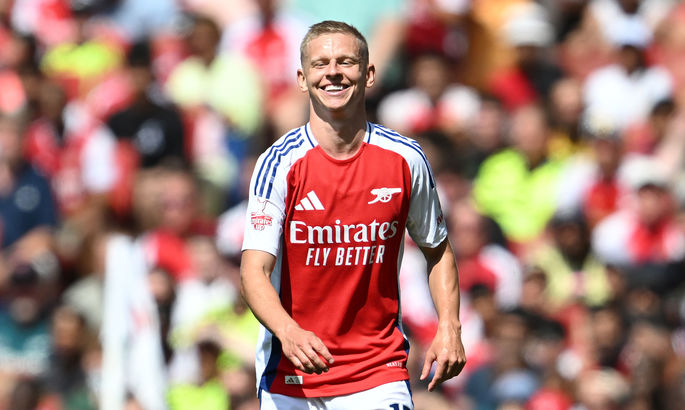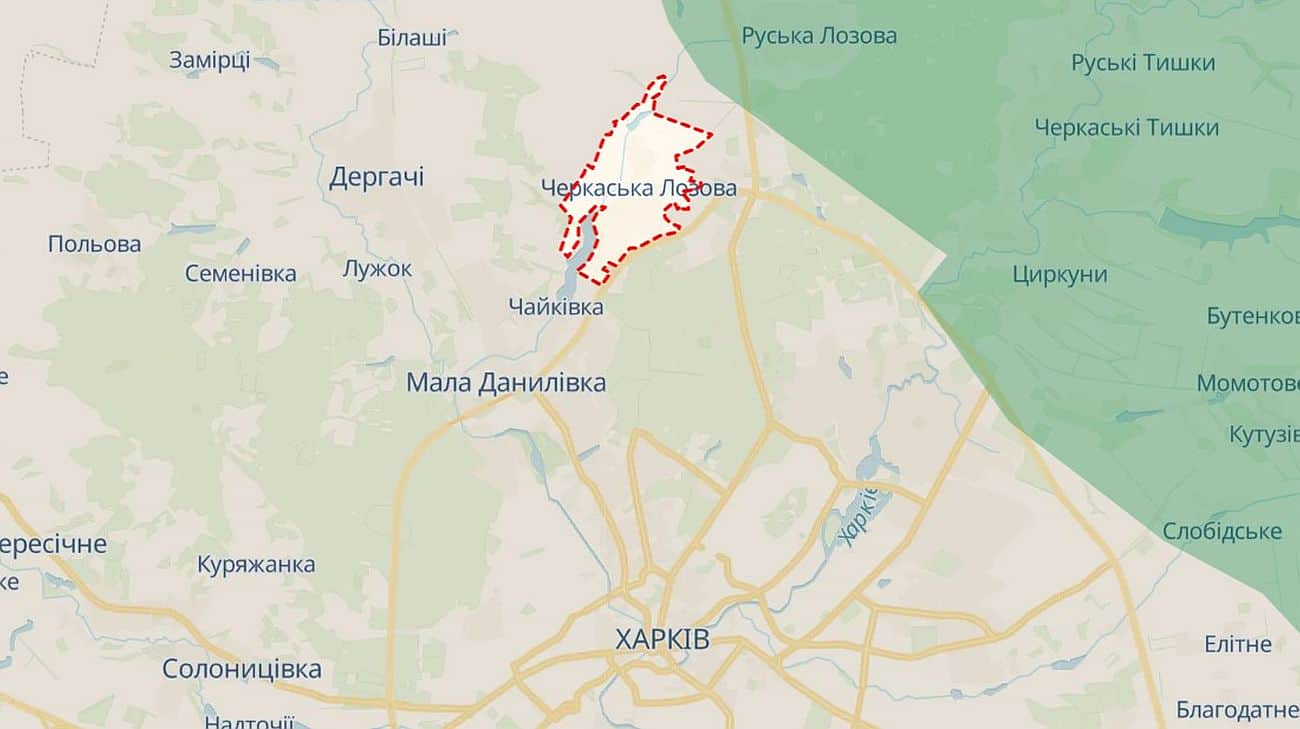ARTICLE AD BOX
More Ukrainian soldiers have deserted the army this year than ever since the onset of a war that analysts say has seen both sides make gains and report losses.
Prosecutions for desertion from Ukraine’s army are thought to have hit at least 30,000 – quite possibly much more – already this year. This is several times the number in 2022, the year the war began when citizens and foreigners voluntarily poured into the military to push Russia back.
Those found guilty are given between five and 12 years in prison. However, some defectors say that is a better option than facing what might be an endless, undefined period on the battlefield.
Desertion has become so common that Ukraine’s parliament, the Verkhovna Rada, took the unprecedented step of decriminalising first-time attempts to flee the army on August 20, 2024, as long as those caught agree to return to duty.
Here’s why analysts say more men are leaving the army and why it is not just a problem for Ukraine:
How many have deserted the Ukrainian army?
The numbers vary depending on who you ask.
According to the Kyiv Post, it is believed that about 60,000 people have been facing criminal charges for fleeing their posts since the war started. The Ukrainian daily cited documents from the prosecutor general, with almost half of those cases initiated this year.
However, British daily The Times also cited figures from the prosecutor general which, it said, showed some 51,000 criminal cases were initiated for desertion and abandonment of a military unit between January and September of this year. El Pais newspaper cited a closer figure of 45,543 desertions between January and August this year, which it said was data from the Prosecutor General’s Office which had been leaked to the Ukrainian press.
All these figures are much higher than the 22,000 criminal charges filed for the same offence in 2023 and just 9,000 cases in 2022.
It is unclear if those fleeing the army are mostly conscripts, or if some who earlier volunteered are also abandoning their posts. Volunteers who are not Ukrainian are allowed to withdraw from the army after six months of fighting.
However, for Ukrainian conscripts – that is, those mandated to join the fighting by a general mobilisation law that has been in force since March 2022 – conscription is for life. There is no time limit placed on it.
Why are so many soldiers deserting?
Low morale caused by exhaustion is the main reason.
Soldiers complain of having to grind through for days on end under heavy fire without a pause because there is no one to relieve them. Those on the front lines have told the media that they have gone from battle to battle with little rest since Russia’s invasion in 2022.
Troops are allowed to take 10 days off twice a year, but manpower shortages sometimes delay even those vacations. Soldiers and their families are pushing for breaks that range between a month’s vacation and a three-year rotation.
One soldier placed under investigation for desertion – Serhii Hnezdilov, who is also a journalist – told The Times newspaper in the UK: “At least in prison you know when you will be able to leave.” He was arrested after writing about his decision to leave the army on Facebook in protest against conditions in the army.
 Russian soldiers fire a Pion self-propelled cannon towards Ukrainian positions at an undisclosed location, September 25, 2024 [Russian Ministry of Defence Press Service via AP]
Russian soldiers fire a Pion self-propelled cannon towards Ukrainian positions at an undisclosed location, September 25, 2024 [Russian Ministry of Defence Press Service via AP]What condition is the army in?
It is not clear how many men Ukraine has lost in the war, but analysts say they might be in the tens of thousands. Western estimates put it at 80,000 soldiers.
Experts say the rising number of desertion cases comes as Ukraine faces a shortage of soldiers on the battlefield – a problem it is trying to solve by forcefully mobilising fighters.
As few as five to seven Ukrainian soldiers are having to face some 30 soldiers from the Russian side in some cases, Simon Schlegel, an analyst with the Crisis Group, told Radio Free Europe, a Prague-based publication.
Analysts estimate there are about one million military personnel in the Ukrainian army compared with some 2.4 million on the Russian side, but neither country publishes those figures. Ukrainian army commanders put the ratio of Russian versus Ukrainian combatants at 10 to 1.
Insufficient manpower is an old problem for Ukraine, even before the start of the war and despite early enthusiasm to join the military right after the invasion, analyst Keir Giles of the United Kingdom’s Chatham House think tank told Al Jazeera.
“Ukraine has been grappling with this for a long time,” he said, adding that the low numbers could also be fuelling further desertions. “There’s exhaustion, there’s shell shock … The initial flush of excitement about the war has worn off, and some people have started to realise that this is for the long haul.”
Alongside the mental and physical fatigue that many soldiers are suffering from prolonged periods at the front line, the Ukrainian army has to deal with inadequate weaponry and ammunition as well.
Despite some wins, including a major incursion into Russia’s Kursk region in August, Ukrainian troops have often found themselves on the back foot in the nearly 32-month-long war with Russia.
Crucially, soldiers say they are poorly armed and complain of having the enemy in sight, watching them advance, and being unable to fire because they have no ammunition, according to accounts from soldiers reported by CNN. Many said they felt guilt for not being able to provide infantry units with adequate cover. Commanders have also told journalists that they have been forced to watch men from entire units die in the war because of the weapons shortage.
Speaking in the United States Congress during a testimony on April 10, General Christopher Cavoli, head of US European Command, described Russia’s five-to-one advantage in artillery shells, predicting that would soon grow to 10 to one.
Why is the army in such a poor state?
Ukrainian officials blame Western allies – the European Union and the US – for being too slow to provide military aid. President Volodymyr Zelenskyy has repeatedly urged Washington, with Congress split on the issue of allocating more aid to Ukraine, to speedily deliver promised funds to allow the country to buy more artillery shells and air defence systems.
On April 24 this year, the US passed a bill after a delay of almost a year, granting a $61bn aid package largely meant for Ukraine. Military aid deliveries to the country as part of the package included vehicles, Stinger air defence munitions, ammunition for high-mobility artillery rocket systems and antitank munitions.
In a statement on April 29, Zelenskyy thanked the US government and said the support had “started arriving” but reiterated a need for speedier help.
“The speed of deliveries means stabilising the front,” Zelenskyy said.
European countries collectively delivered 118.2 billion euros ($128.2bn) to Ukraine between April 2022 and September 2024, while the US has delivered 84.7 billion euros ($91.9bn), according to data from the Germany-based Kiel Institute. Analysts say the upcoming US election that could see former President Donald Trump return to the White House is causing more uncertainty for Ukraine. Trump has repeatedly threatened to cut US funding to the country and many of his Republican Party members back him on the topic.
Are conscription laws fuelling desertions?
Ukraine’s martial law, which entered into force at the start of the war, mandates young men to join the military.
Zelenskyy’s government says the army needs to enlist 500,000 out of about 3.7 million men of fighting age who are eligible for service.
Since the president signed a renewed mobilisation law in April 2024, men between the ages of 25 and 60 are now eligible. Previously, the range was 27 to 60.
The updated law obliges men of fighting age to update their information with the authorities and tightens punishments for draft dodging, with fines increased from about $13 to $215 and violators facing several days in detention.
Some criticise the conscription decree as a whole for its seeming rigidity: there are no legal ways to leave the military as a conscript, unless under special circumstances such as raising a minor or a child with a disability or caring for a spouse with a disability or severe sickness.
Debates around drafting ages are also raging: some factions want to keep more young men at home to run the economy. Others, especially those in the military, say more active men are needed on the battlefield.
Under Ukraine’s martial law, men are first drafted into military service in readiness for mobilisation or “call-up” when they actually go to fight.
President Zelenskyy faced some pressure before agreeing to sign the April law, reducing the drafting age to 25, according to Ukrainian media, amid calls to lower the drafting age to 20 or 18.
Videos on social media show men from the Ukrainian army raiding bars and restaurants and forcefully dragging young men away if they refuse to be drafted under the new law. The decree requires eligible men, at home or abroad, to register and carry their drafting papers on them at all times.
Elena Davlikanova, a professor at Ukraine’s Sumy State University (SSU), says the age debate fails to focus on the real reasons why people do not want to sign up.
“It is the lack of weapons and munitions that is the major stopper from mobilisation,” Davlikanova told Al Jazeera. “It would have been way cheaper to supply enough air defence systems on time than plan Ukraine’s reconstruction, the cost of which is close to half a trillion US dollars,” she added, referring to the estimated cost of rebuilding the devastated country.
Is there any way to avoid conscription?
Not officially. Martial law means those in the drafting age groups and categories are not allowed to leave the country. However, hundreds of young men have fled to neighbouring countries fearing conscription. Some have risked the freezing waters of the Tysa River, on the border with Romania, to get away, and many have drowned, according to Ukraine’s border patrol, which did not give specific numbers.
Those caught trying to leave the country are often fined and then released.
 A Ukrainian serviceman places a flag symbolising a dead soldier at a makeshift memorial to fallen soldiers on Independence Square in Kyiv, on July 30, 2024 [Sergei Supinsky/AFP]
A Ukrainian serviceman places a flag symbolising a dead soldier at a makeshift memorial to fallen soldiers on Independence Square in Kyiv, on July 30, 2024 [Sergei Supinsky/AFP]Is Russia facing the same problem?
Manpower and weaponry problems are also putting pressure on the Russian side, experts say. However, there are still more Russian soldiers than Ukrainian at the moment, and Russia has taken about 19 percent of Ukraine’s territory since the war started.
“We have to keep this context in mind when we talk about Ukraine because we don’t see what’s happening on the other end – Russia has years and years of practice keeping its information about losses secret,” Giles said.
Russian men aged between 18 and 30 are eligible to be drafted for a year. At present, conscripts are supposed to be legally exempt from combat if they do not have at least four months of training, although this is not happening in practice, analysts say.
Since the war started, Russian courts have tried some 8,000 cases of violations involving military personnel, more than 80 percent being desertions, according to Russian media outlet Mediazona.
Earlier this year, however, Ukrainian military intelligence reported that 18,000 soldiers in Russia’s southern military district had deserted.
The main reasons some give are a fear of getting wounded – or worse, dying – in a war that has no end in sight. By May, at least 500,000 Russian soldiers had either died or been wounded since the war began, according to the UK’s Ministry of Defence.
Alex Gatopoulos, Al Jazeera’s defence editor, noted that while Russia’s troop numbers might be bigger, “they’re not necessarily better”. The country is just catching up with Ukraine’s effective drone strategy, but Russian troops have lost an “exceptionally high number of tanks to Ukrainian attacks” as well as troops, he said.
“For Russia, the only path to a military victory is through attrition and the use of its larger armed forces to grind down the smaller Ukrainian army,” Gatopoulos said, referring to a “meat grinder” strategy that sees Russia push soldiers to the front lines despite high death tolls.
Russia has tried to entice men to join the army. Authorities in August quadrupled a one-time payment for enlistment since August. Soldiers who sign up now receive nearly 1 million roubles ($11,500) – almost 23 times the average monthly pay of about $500.
However, there is still little enthusiasm for joining up, analyst Kseniya Kirillova wrote in a paper for the US-based Center for European Policy Analysis.
“Russia’s regions only achieved 50-60 percent of their recruitment targets in 2023 … some recruitment offices are now focusing on coercing conscripts,” Kirillova noted.

 1 month ago
22
1 month ago
22








 English (US)
English (US)